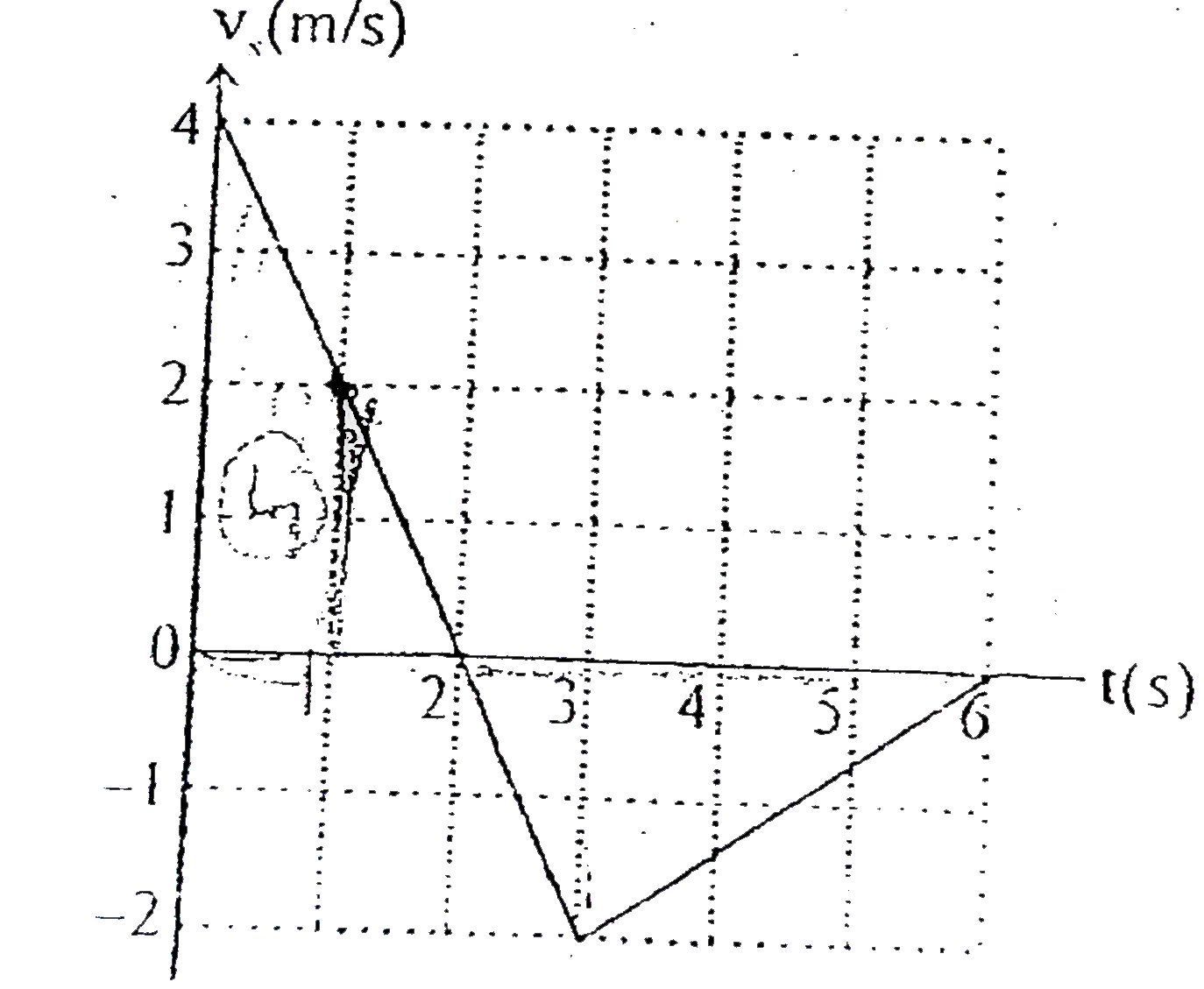If the velocity of a particle moving along x-axis is given as v=(3t2−2t) and t=0, x=0 then calculate position of the particle at t=2sec.
The correct Answer is:x=4
To find the position of the particle at t=2 seconds given the velocity function v(t)=3t2−2t and the initial condition x(0)=0, we will follow these steps:
Step 1: Understand the relationship between velocity and position
The velocity v is the derivative of the position x with respect to time t:
v=dxdt
This means that to find the position function x(t), we need to integrate the velocity function.
Step 2: Set up the integral
We can express the change in position as:
dx=vdt
Substituting the given velocity function:
dx=(3t2−2t)dt
Step 3: Integrate the velocity function
To find the position function x(t), we integrate the velocity:
x(t)=∫(3t2−2t)dt
Calculating the integral:
x(t)=∫(3t2)dt−∫(2t)dt
x(t)=3⋅t33−2⋅t22+C
x(t)=t3−t2+C
Step 4: Apply the initial condition
We know that at t=0, x(0)=0:
x(0)=03−02+C=0
This implies:
C=0
Thus, the position function simplifies to:
x(t)=t3−t2
Step 5: Calculate the position at t=2 seconds
Now we can find the position at t=2:
x(2)=23−22
x(2)=8−4=4
Final Answer
The position of the particle at t=2 seconds is:
x(2)=4 meters
---
The velocity v is the derivative of the position x with respect to time t:
v=dxdt
This means that to find the position function x(t), we need to integrate the velocity function.
We can express the change in position as:
dx=vdt
Substituting the given velocity function:
dx=(3t2−2t)dt
To find the position function x(t), we integrate the velocity:
x(t)=∫(3t2−2t)dt
Calculating the integral:
x(t)=∫(3t2)dt−∫(2t)dt
x(t)=3⋅t33−2⋅t22+C
x(t)=t3−t2+C
We know that at t=0, x(0)=0:
x(0)=03−02+C=0
This implies:
C=0
Thus, the position function simplifies to:
x(t)=t3−t2
Now we can find the position at t=2:
x(2)=23−22
x(2)=8−4=4
The position of the particle at t=2 seconds is:
x(2)=4 meters
Topper's Solved these Questions
- RACEBOOK - ALLENCHAPTER - RACEEXERCISE - Basic Maths (Graphs))
29 Videos
- RACEBOOK - ALLENCHAPTER - RACEEXERCISE - Basic Maths (Co-ordinate & Algebra)
37 Videos
- RACEBOOK - ALLENCHAPTER - RACEEXERCISE - Basic Maths (Differentiation)
38 Videos
- NEWTONS LAWS OF MOTIONBOOK - ALLENCHAPTER - NEWTONS LAWS OF MOTIONEXERCISE - EXERCISE-III
28 Videos
- SIMPLE HARMONIC MOTIONBOOK - ALLENCHAPTER - SIMPLE HARMONIC MOTIONEXERCISE - Example
1 Videos
Similar Questions
If the velocity of a paraticle moving along x-axis is given as v=(4t2+3t=1)m/s then acceleration of the particle at t=1sec is :
View SolutionPosition of particle moving along x-axis is given as x=2+5t+7t2 then calculate :
View SolutionVx is the velocity of a particle of a particle moving along the x−axis as shown. If x=2.0m at t=1.0s, what is the position of the particle at t=6.0s?

View SolutionVelocity (in m/s) of a particle moving along x-axis varies with time as, v=(10+5t−t2) At time t=0,x=0. Find
(a) acceleration of particle at t=2s and
(b) x-coordinate of particle at t=3s
View SolutionA particle moves along the X-axis as x=u(t−2s)=at(t−2)2.
View SolutionPosition of a particle moving along x-axis is given by x=2+8t−4t2. The distance travelled by the particle from t=0 to t=2 is:-
View SolutionThe displacement of a particle moving along the x-axis is given by equation x=2t3−21t2+60t+6.The possible acceleration of the particle when its velocity is zero is
View SolutionThe position of a particle moving along x-axis given by x=(−2t3−3t2+5)m. The acceleration of particle at the instant its velocity becomes zero is
View SolutionA particle moves along the X-axis as x=u(t−2s)+a(t−2s)2.
View SolutionThe position of a particle moving along x-axis varies eith time t as x=4t−t2+1. Find the time interval(s) during which the particle is moving along positive x-direction.
View Solution
